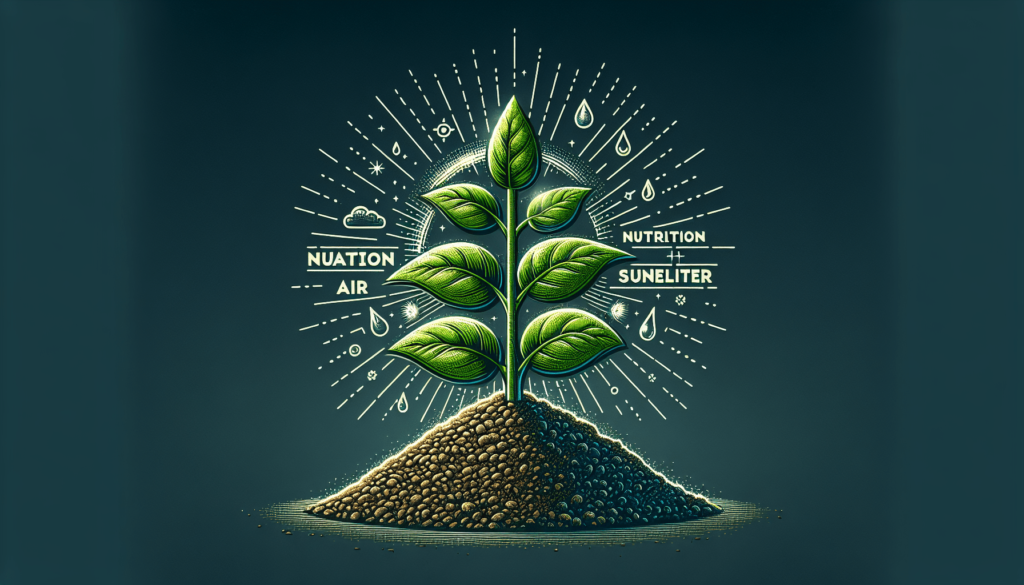
What are the five basic needs of living things? That’s a question that often leads us down a winding path of biological facts, personal reflections, and sometimes arguments over dinner. Whether we’re discussing the diet of a houseplant or the latest findings on human well-being, we all fundamentally want to know what keeps life ticking. Let’s break it down.
Air: The Breath of Life
Oxygen for Survival
Air is something we often take for granted—until we can’t. All aerobic organisms, from humans to the tiniest microscopic life forms, rely on oxygen to sustain life. If you’ve ever tried holding your breath too long, you know firsthand how vital oxygen is. For us, oxygen enables our cells to produce energy. Without it, well, things go downhill fast.
Plants and Carbon Dioxide
Our leafy friends, the plants, have a slightly different relationship with the air around them. While we inhale oxygen and exhale carbon dioxide, plants take in carbon dioxide and release oxygen through photosynthesis. This awesome little exchange makes our whole ecosystem work. It’s kind of like an unseen dance where we’re grateful partners, both giving and receiving what the other needs.
Water: The Universal Solvent
Hydration for Life
Water is often referred to as the “universal solvent” because it dissolves more substances than any other liquid. But beyond its chemical prowess, water is essential for all living organisms. Remember the time you went out for a jog without a water bottle? It’s enough to remind us how crucial hydration is. Our bodies are about 60% water, and every single cell relies on it to function properly.
The Role in Plants
Plants also need water, but not just for drinking. Water serves as a medium for transporting nutrients from the soil to different parts of the plant. Root to leaf, it’s a journey of epic proportions. Additionally, water is crucial for the photosynthesis process in plants, just like it’s vital for our own metabolic functions.

Food: The Nourishment We Need
Nutrients for Energy
Food is more than just a means to satiate our hunger—it’s fuel. The right nutrients in the right amounts provide us with energy to go about our daily lives. Carbohydrates, proteins, and fats make up our primary sources of energy, each contributing its own benefits. Ever noticed how a balanced meal makes you feel more alert and happy? That’s your body saying, “Thank you for the nutrients!”
Autotrophs and Heterotrophs
The world can be divided into those who make their own food and those who rely on others. No, we’re not talking about chefs and diners. We’re talking about autotrophs and heterotrophs. Autotrophs, like plants, produce their own food through photosynthesis. Heterotrophs, like us, consume plants or other animals to get our nutrients. It’s a circle of life scenario where everyone plays a part, except maybe that one guy who just eats chips all day.
Shelter: A Place to Call Home
Protection from the Elements
Shelter is more than just a roof over our heads; it’s protection from the elements. Sun, rain, wind, and snow—none of these are particularly friendly when experienced without cover. Shelter provides a controlled environment where we can stay warm, dry, and safe, enabling us to focus on other important aspects of life, like binge-watching TV shows.
Nests, Burrows, and Human Homes
Different organisms have different needs when it comes to protection. Birds build nests high up in trees, animals dig burrows underground, and humans build houses. Each type of shelter has the same ultimate goal: to protect its inhabitants from external threats. It’s a universal need tailored to specific circumstances and skills, whether you’re wielding a hammer or building with twigs.

Sleep: The Recharge We All Need
Importance of Rest
Not getting enough sleep can turn even the most upbeat person into a grumpy zombie. Our bodies use sleep to repair cells, consolidate memories, and rejuvenate our minds. This isn’t just a human thing—animals, too, need their Zzzs. Whether it’s a cat napping in a sunbeam or an owl dozing during the day, rest is non-negotiable for optimal functioning.
Sleep Cycles in Nature
Animals have various sleep cycles. Some sleep at night (diurnal), while others are active during the night and sleep by day (nocturnal). Then, there are animals with crepuscular activity patterns, being most active during dawn and dusk. For example, deer tend to be crepuscular to avoid predators that are out in the brighter hours. It’s an intriguing mix of rest and survival strategy.
Putting It All Together
When we step back and look at these five essential needs, it becomes clear that life—a delicate, intricate, beautiful system—relies on a balance. Air, water, food, shelter, and sleep aren’t just individual components; they interlace to create the complex tapestry that sustains us. If you’re ever feeling overwhelmed, remember the simplicity at the core of our existence. We share these needs with every other living thing on this planet. It’s a humbling reminder that, despite our differences, we’re all in this together.
